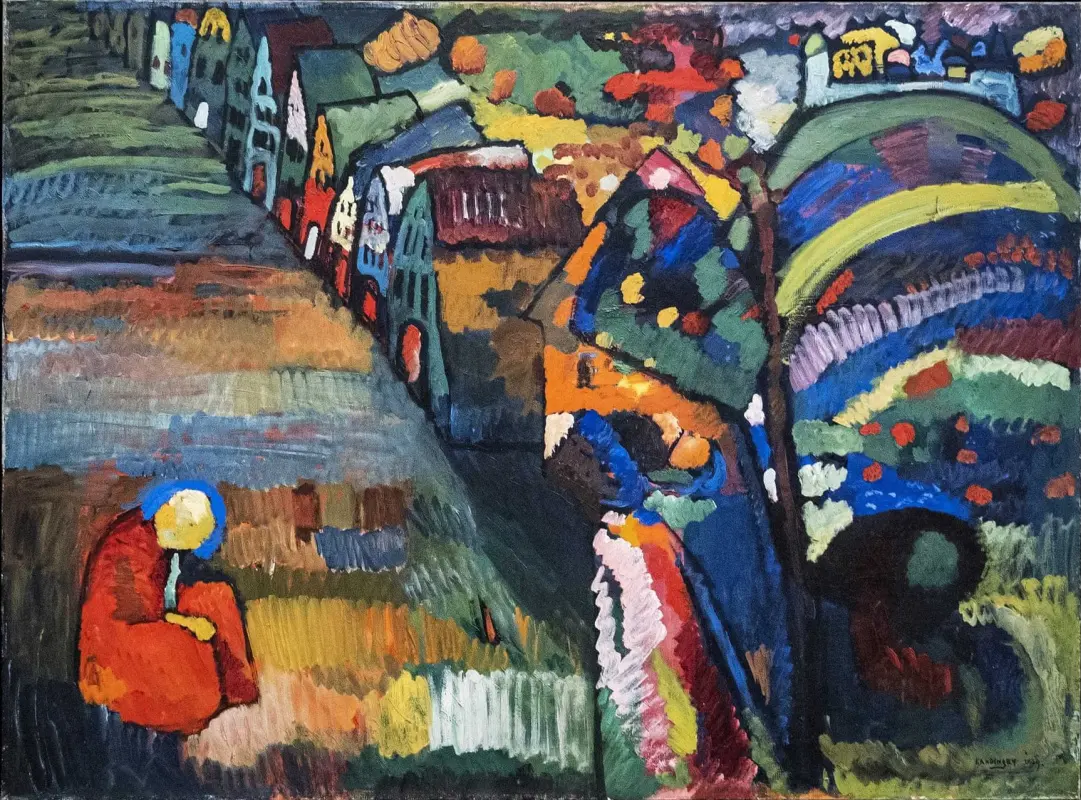Городской совет Амстердама поставил неожиданную точку в девятилетней судебной тяжбе, потрясшей международный мир искусства. Муниципалитет решил в одностороннем порядке вернуть «Пейзаж
с домами» (1909) Василия Кандинского семье его прежних владельцев-евреев. Полотно оценивается в 20 миллионов евро.

Совет принял решение вопреки вердикту нидерландской комиссии по реституции. Та в 2018 году постановила, что муниципальный музей современного искусства Стеделейк может оставить работу себе, поскольку она была «куплена добросовестно» в октябре 1940-го и имеет «важную историческую ценность». В 2020 году решение комиссии подтвердил и суд в Амстердаме.
Истцы по делу (их имена не называются публично) заявили, что довоенные владельцы «Пейзажа с домами» Роберт Левенштейн и его жена Ирма Кляйн были вынуждены продать его «под принуждением», поскольку их швейная фабрика в Амстердаме больше не могла работать в условиях оккупации. Адвокаты заявителей указали, что 160 гульденов, которые Стеделейк уплатил за картину на аукционе, — это лишь 30 процентов от первоначальной цены, за которую владельцы приобрели её в 1923 году.
Истцы по делу (их имена не называются публично) заявили, что довоенные владельцы «Пейзажа с домами» Роберт Левенштейн и его жена Ирма Кляйн были вынуждены продать его «под принуждением», поскольку их швейная фабрика в Амстердаме больше не могла работать в условиях оккупации. Адвокаты заявителей указали, что 160 гульденов, которые Стеделейк уплатил за картину на аукционе, — это лишь 30 процентов от первоначальной цены, за которую владельцы приобрели её в 1923 году.
Они также отметили, что Всемирная конференция по материальным претензиям евреев к Германии сочла картину украденной.
Это дело стало «лакмусовой бумажкой» для проверки морального авторитета комиссии по реституции, которую создали для рассмотрения исков о произведениях искусства, конфискованных нацистами. А решение суда, вместо того, чтобы положить конец спорам, открыло новую главу в противоречивой истории «Пейзажа с домами».
Представитель истцов назвал приговор «повторным ограблением», пояснив, что «первое было совершено нацистами, а второе — комиссией по реституции совместно с городским судом Амстердама».
Представитель истцов назвал приговор «повторным ограблением», пояснив, что «первое было совершено нацистами, а второе — комиссией по реституции совместно с городским судом Амстердама».
На сторону бывших владельцев встал ряд влиятельных политиков. Они указали, что недопустимо учитывать интересы музеев при возврате награбленного искусства и что сохранение произведений искусства на основании их культурной ценности больше не отвечает ожиданиям общества. После этого два члена реституционной комиссии подали в отставку.
Всё шло к повторному рассмотрению дела в суде, и мэр Амстердама Фемке Халсема решила разрубить этот «гордиев узел». Она заявила, что работа будет немедленно возвращена «в интересах исправления ошибок».
Всё шло к повторному рассмотрению дела в суде, и мэр Амстердама Фемке Халсема решила разрубить этот «гордиев узел». Она заявила, что работа будет немедленно возвращена «в интересах исправления ошибок».
По материалам The Irish Times




















